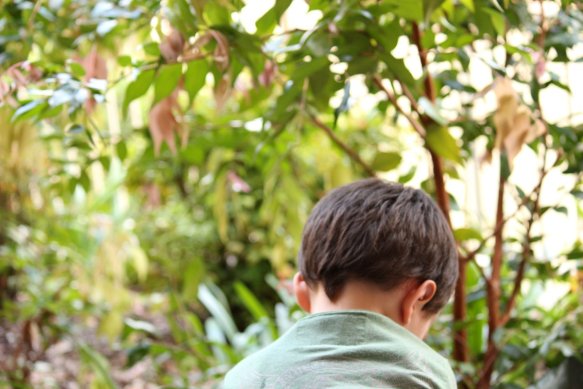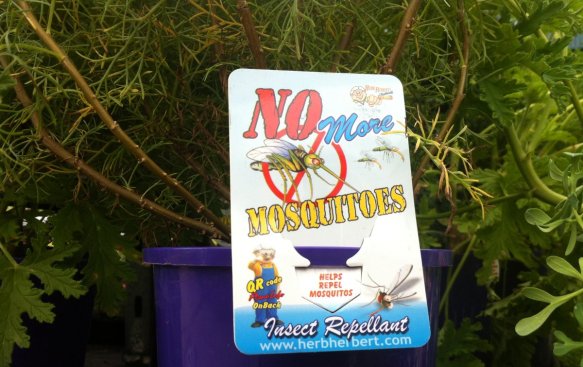 Summer is here and you’ll want to know how to spend time in the backyard without a barrage of bites from pesky mosquitoes!
Summer is here and you’ll want to know how to spend time in the backyard without a barrage of bites from pesky mosquitoes!
There is little doubt mosquitoes are a nuisance but in some parts of Australia but they can also pose a health risk. Around 5,000 people a year are infected with Ross River virus. In fact, 2015 saw the biggest outbreak of mosquito-borne Ross River virus disease ever recorded in Australia.
I recently shared ten tips on keeping free of mosquito bites with the University of Sydney that proved popular so now here are five top tips (with a bit more detail) to help reduce the risk of mosquito bites and get the most out of your backyard this summer!
Water water everywhere, just what mozzies love
Don’t let mosquitoes find a home around your home.
The immature stages of mosquitoes (commonly known as wrigglers) are found in free-standing water so drain, tip out or cover any water holding containers. These can range from buckets and discarded tyres to children’s toys and slumped tarpaulins covering boats or trailers.
Flush out your bird baths with a hose once a week (you can also scrub it with wire brush to dislodge any mosquito eggs). Mosquitoes can even find a home in your pet’s water bowl so empty before refilling at least once a week.
Can you see a puddle or pool of water? There are probably mosquitoes in there, or dozens of eggs waiting to hatch.
Pot plant saucers (particularly “self watering” pots) are great places for mosquitoes. If you fill saucers with sand, the moisture will be trapped but there won’t be any “free standing” water for mosquitoes to use. Good for the plants, bad for mosquitoes.
Sometimes the problem comes from above. Check your roof gutters, when they get blocked with leaves and water is trapped it provides habitat for mosquitoes. Same goes for courtyard drains, make sure you clean out soil, sand and other debris that might trap pools of water.
Make sure you keep your swimming pool chlorinated. Neglected swimming pools can harbour mosquitoes, especially mostly empty in-ground pools that partially fill following rainfall.

It may seem like a good idea to store water around the home to help keep plants going during a long hot summer but any water, from a full rainwater tank to a few drops in the base of a pot plant saucer, can make a great home for mosquitoes!
Spray with care (if you really need to)
A range of products is available that will help control mosquitoes. It is important to ensure that any product used is registered with the Australian Pesticides and Veterinary Medicines Authority (APVMA). The APVMA test products for their effectiveness and safety and it is critical that the instructions on the insecticide label are followed.
The insect growth regulator methoprene (NoMoz) and the monomolecular film (Aquatain) can both be used to stop mosquitoes emerging from backyard habitats. A few pellets of methoprene or a few drops of monomolecular film into water can be enough to provide a month or so of mosquito control. It was once common practice to put a teaspoon of kerosene into rainwater tanks (the kerosene floats on the surface of the water, drowning mosquito wrigglers), now monomolecular films can be used. Keep in mind though, if your rainwater tank is properly screened, you don’t need to worry about putting anything inside.
For mosquitoes flying in from beyond the backyard, sometimes you need to use insecticides. Insecticide sprays generally fall into one of two categories. “Knockdown” sprays are designed to kill flying insects while they’re buzzing about. While they’ll certainly kill mosquitoes, mosquitoes are far less likely to be randomly flying about in the backyard. They’re usually a little more sneaky than that. A better option will be “surface sprays” that provide some residual control and kill the mozzies where they hide out.
Residual insecticides (typically containing synthetic pyrethroids and often marketed as “surface sprays”) can be applied to cool and shaded areas. The most effective places will be under outdoor furniture, the shaded sides of buildings, verandas or within vegetation. While these products are safe for people and pets, they are likely to impact non-target insects too (e.g. bees, butterflies, beetles) so should be employed judiciously, especially if spraying on plants. Never spray them into or around ponds as these insecticides can be toxic to fish. Always check the label of the insecticide for directions.
I once asked a local resident if this type of spraying worked in reducing mosquito numbers around the home. “Yeah, it killed everything” they replied. We really don’t want to be killing everything so please be careful when using these products.
Topical mosquito repellents will remain the first line of defence for many when mosquitoes are out in force. Products that contain DEET (diethyltoluamide) or picaridin will provide the longest lasting protection but make sure they’re applied correctly. You’ll need a thin coverage of all exposed skin. A dab “here and there” won’t be enough. Plant-based products (e.g. tee tree oil) will provide some protection but will generally need to be applied more frequently than the other repellents to ensure long lasting mosquito bite protection.
Burning coils and switching on zappers
The smell of mosquito coils is up there with the smell of sunscreen and BBQs as a reminder of summer. Mosquito coils and sticks are good at reducing the number of mosquito bites but they’re unlikely to stop them all. A recent study found little evidence that burning mosquito coils prevents malaria so don’t expect all biting mosquitoes to stop once you light up a coil. Make sure you use coils or sticks that contain insecticide (e.g. pyrethroid) and not just botanical extracts (e.g. citronella) as the insecticides will actually kill some mosquitoes.
Never sleep in an enclosed room with a mosquito coil burning. Seriously, don’t keep a mosquito coil burning overnight in your bedroom.
There is a range of “smokeless” ways to beat mosquitoes too. These are either plug-in or butane powered units that heat insecticide impregnated pads, or reservoirs of liquid. Most of these types of units are designed for indoor use but they’ll work just as well in sheltered balconies or courtyards too. Like the insecticide impregnated coils and sticks, these products provide the best bite protection but without the smoke.
You can also forget about the various types of mosquito traps on the market. Some may catch mosquitoes but never enough to stop bites in the backyard. Electrocuting traps and those with UV lights are generally ineffective at catching mosquitoes, you’ll catch many more non-biting flies, moths and beetle than mosquitoes.

Encourage the creatures that will eat mosquitoes
Mosquitoes are food for fish, frogs, birds and bats. Can they help keep mosquito numbers down?
Fish eat mosquito wrigglers so release some (native fish preferably) into your ornamental ponds. Best not release “mosquitofish” (aka the plague minnow, Gambusia holbrooki) as these will chomp through more than just mozzies (say good bye to native fish and tadpoles!). Contact your local council who can provide some advice on what fish may be best suited to your local area. If you’ve got frogs about, tadpoles won’t munch through many wrigglers, but having frogs about is reward enough anyway!
Many claim that encouraging birds or bats to move in around the house will help reduce mosquitoes. A garden of native shrubs and ground covers will provide a home for small insect-eating birds so at least some local animals will be snacking on mozzies. But don’t buy bird houses and bat boxes expecting all the bites to disappear. Although birds and bats do eat mosquitoes, they don’t eat anywhere near enough to reduce nuisance biting. Encourage these creatures because they’re nice to have around, not because they’ll provide pest control.
There are some mosquitoes whose wrigglers will actually eat the wrigglers of other mosquitoes. The news gets even better because these mosquitoes (Toxorhynchites speciosus) don’t even bite (they’re also film stars)! Unfortunately, there will never be enough of them to eat enough mosquitoes to make a difference having them around (as well as other mosquito eating arthropods such as dragonflies, spiders, beetles and damselflies) can only help, even if it is just a little bit.

Mosquito repellent plants aren’t repellent
Sounds like a dream that you could plant something in the garden that would “naturally” keep mosquitoes away. Problem is, none of the plants promoted as “mosquito repelling” provide any substantial protection.
Experiments in Africa found that some potted plants repelled around 30-40% of the mosquitoes. I’m somewhat sceptical of that success. Whenever I’ve tested spatial repellents, especially those containing plant extracts that are actively released in one way or another, I rarely get that success. Whole plants? I’m not so sure.
If you check out your local nursery, you may find a plant called “Mozzie Blocker” for sale. This plant is the Lemon Scented Gum (Leptospermum liversidgei). While the extracts from these types of trees (Leptospermum and Melaleuca species) have been shown to repel some mosquitoes, there is no evidence that the whole plant will reduce mosquito bites. It is worth remembering that these plants populate coastal swamp forests and I know from experience that these are some of the most intense places for biting mosquitoes you can find!
In summary, the nuisance caused by local mosquitoes will often be determined by the environment around your home as much as those in it but there are still things you can do to reduce their bites. Most important of all is ensuring you’re not creating opportunities for mosquitoes to breed and hang out in your backyard!
What’s your favourite way to beat the bite of backyard mosquitoes? Join the conversation in Twitter!
Want to learn more about the amazing world of Australian mosquitoes? Check out “A Field Guide to Mosquitoes of Australia” out now through CSIRO Publishing. Over 200 pages containing a pictorial guide to almost 100 different mosquitoes along with tips on beating their bite and protecting your family from the health risks of mosquitoes. You can order online or through your favourite local bookstore or online retailer.


















